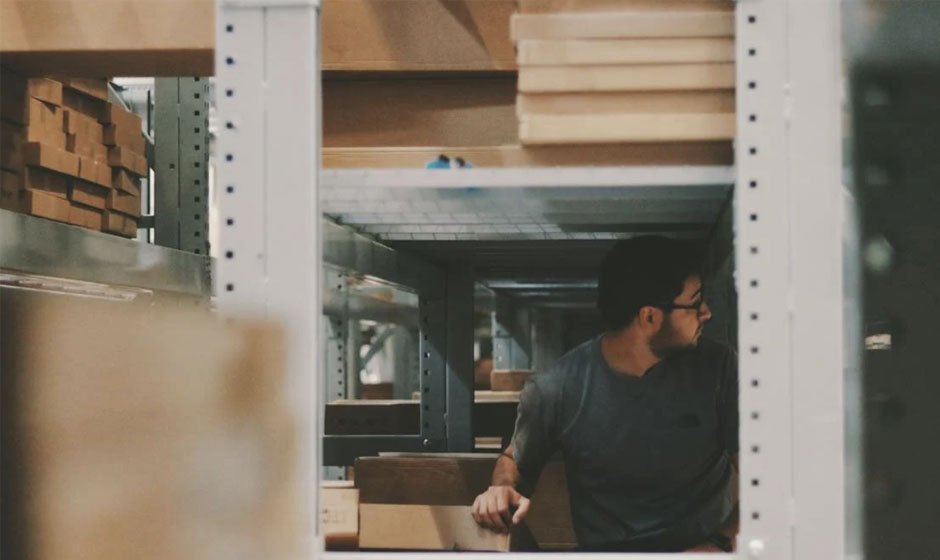Automation in Warehousing: 7 Trends to Be on the Lookout in 2024

2024 appears to be rather promising for the warehouse sector, with automation laying the groundwork for a technological revolution that will boost innovation and production. In 2023, the value of the global warehouse automation market surpassed 23 billion U.S. dollars.
Numerous ground-breaking discoveries are expected to revolutionize warehouse operations and make them quicker, smarter, and more flexible to shifting market conditions. Robots and contemporary data analytics have the potential to expand the warehousing industry to previously unthinkable heights.
In 2024, industry professionals should closely monitor the seven significant advancements in warehouse automation that we’ll examine in this blog post if they want to maintain their competitiveness and optimize their operations.
Enterprise Resource Planning
Technology advancements are driving significant changes in the warehouse sector. Enterprise resource planning systems are a key innovation, especially in the fashion industry. Fashion ERP systems are designed to meet the needs of the fashion industry, and integrate inventory management with customer orders on a single platform.
Fashion warehouses can streamline their operations with this integration, reduce manual errors, and quickly adapt to changing fashion styles. Fashion ERP systems help warehouses improve efficiency and agility, and can respond to market demand proactively.
Robotics and Autonomous Vehicles
This year, the change occurring in the warehouse industry will be mostly driven by robotics and autonomous cars. The picking and moving processes are now much faster and more efficient thanks to these advancements, which are radically altering how warehouses operate.
With unmatched precision, robots operating on complex artificial intelligence algorithms can navigate warehouse aisles. They can precisely choose and arrange objects, significantly reducing the margin for mistakes that are frequently connected to manual handling.
Additionally, autonomous cars are essential to warehouse internal logistics. They are made to make moving goods from the warehouse to shipping regions easier. Automation speeds up operational procedures and significantly reduces the demand for manual labor.
Enhanced Use of AI and Machine Learning
Artificial intelligence and machine learning are increasingly used by warehouses to enhance forecasting and operational effectiveness. These cutting-edge solutions use historical data analysis to anticipate future inventory requirements, identify possible supply chain problems, and assist in better stock management. Warehouses can function more efficiently thanks to AI and ML integration, which guarantees they always have the proper amount of inventory on hand and are prepared to handle problems before they arise.
Through the use of AI and ML to forecast future trends and requests, warehouses are able to manage their operations more proactively. This guarantees optimal inventory levels and prompt client order fulfillment. Predictive research gives warehouses a competitive edge in the dynamic, fast-paced market by enabling them to swiftly adapt to changes in the market. These technological advancements enable warehouses to make decisions faster, leading to more inventive and adaptable company strategies, as well as increased operational efficiency.
IoT Devices for Real-Time Inventory Management
The Internet of Things is revolutionizing real-time inventory management. IoT devices like RFID tags and sensors automatically update the locations and conditions of the goods in the warehouse. Thanks to this constant influx of data, warehouses can correctly identify inventory levels, monitor products in real time, and act promptly with solid knowledge.
Accuracy is increased, losses are reduced, and operational efficiency is raised as a result. A more flexible resource management plan, fewer errors, and more effective operations are the results of improved inventory visibility and control.
Warehouse Management Systems (WMS) Become More Sophisticated
As advanced analytics and AI are integrated, warehouse management systems will change and become more complex. These solutions offer a comprehensive perspective on order processing, inventory management, and warehouse operations.
The latest WMS systems incorporate AI to improve warehouse routing, automate restocking processes, and boost order fulfillment accuracy. Unprecedented levels of productivity and efficiency can be attained by warehouses by centralizing processes into a single, intelligent platform.
Adoption of Voice and Visual Technologies for Improved Picking Accuracy
The goal of voice and visual technologies’ major advancements in warehouse operations is to increase worker efficiency and picking accuracy. Voice-activated technology helps employees pick by guiding them through the process while minimizing errors and enabling hands-free operation.
Similar to this, visual guidance systems and augmented reality (AR) offer visual signals and overlays to help workers find goods fast and confirm picks right away. These tools not only make selecting easier, but they also cut down on the time and expense needed to train new hires.
Sustainability Drives Automation Choices
Decisions about warehouse automation are becoming more and more influenced by sustainability. Companies are adopting more ecologically friendly technology and practices as they become more aware of their environmental impact.
Automated systems are being developed with lower energy use, better space utilization, and lower waste. Robots that use less energy, solar-powered storage facilities, and packing optimization systems that use less material, are a few examples of the more common technologies. In the long run, warehouses can save money thanks to this trend toward sustainability, which also helps them lessen their carbon footprint.
In Closing
This year is expected to be important for warehouse automation. The aforementioned trends are revolutionizing the sector and presenting previously unheard-of chances for efficiency and expansion. In addition to being competitive, warehouses that adopt these technologies and change with the times will also establish new benchmarks for productivity and creativity in the sector. The combination of these trends will surely redefine what is possible in warehousing as we go forward, laying the groundwork for a time when automation will be required rather than just an option.



